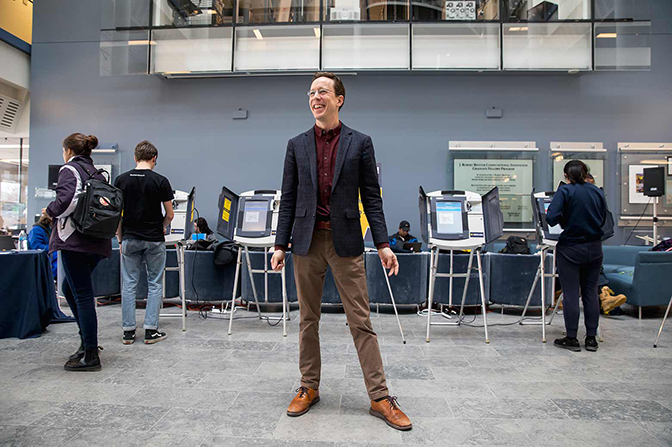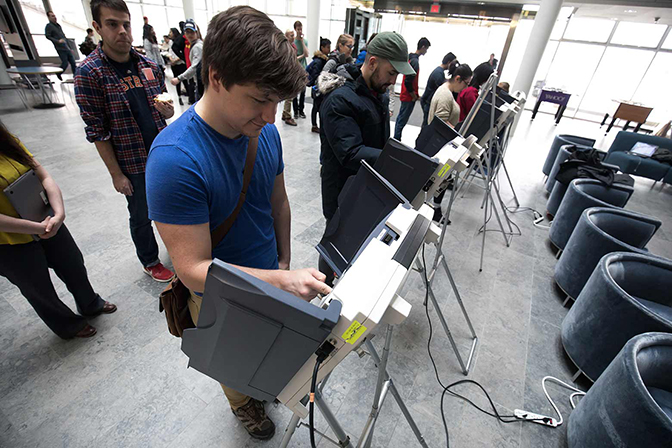
‘I hacked an election. So can the Russians.’
Professor Alex Halderman and the New York Times staged a mock election to demonstrate voting machine vulnerability.

Professor Alex Halderman and the New York Times staged a mock election to demonstrate voting machine vulnerability.

A row of voting machines purchased on eBay lined Tishman Hall one winter morning. These were archetypes of the very same equipment used today in many states—Georgia, and parts of Indiana, Kansas, Kentucky, Mississippi, Tennessee, Texas, Virginia, Florida and Pennsylvania.
Students cast ballots for the “greatest university”—the University of Michigan or Ohio State.
Unbeknownst to the voters, the machines had been hacked by a likely culprit: J. Alex Halderman, professor of computer science and engineering who routinely uses hacking to demonstrate how vulnerable electronic voting actually is. He has turned a voting machine into a PacMan game and famously hacked a mock election in DC several years ago, changing votes to famous robots.
Halderman worked with the New York Times editorial department to produce the video: I hacked an election. So can the Russians. In it, he explains how he did it.
“After the chaos of the 2000 election, we were promised a modern and dependable way to vote,” Halderman says in the video. “I’m here to tell you that the electronic voting machines Americans got to solve the problem of voting integrity, they turned out to be an awful idea. That’s because people like me can hack them all too easily.
“Our highly computerized election infrastructure is vulnerable to sabotage and even to cyberattacks that could change votes.”

Halderman has testified before Congress on the issue. He says that while it’s promising that the Senate Intelligence Committee has recently shown some understanding of the problem, states must act too.
He advocates for back-up paper ballots that could make true audits possible. It’s a system that President Trump also supports.
“In a real election an official could quickly scan these paper ballots and shortly after have a human verify the results,” Halderman says in the video.